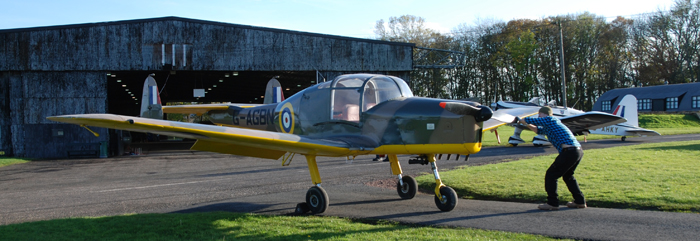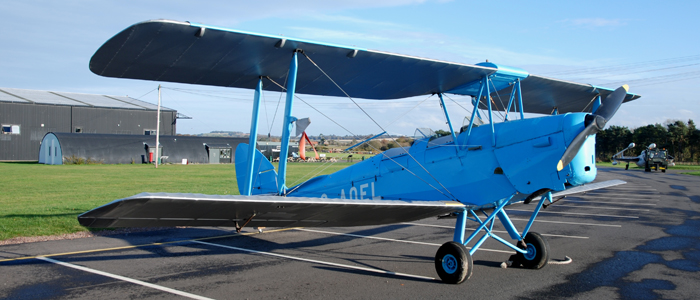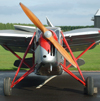Since I started as an intern at National Museums Scotland, I have had many opportunities to be involved in a wide range of activities. These have varied from the conservation of surveying equipment used by Charles Piazzi Smyth at the Great Pyramid, to the fabrication and replication of components using various lathes and tools, as well as helping with installations at the National Museum of Scotland and attending several talks and tours.
One activity I had not expected to encounter was the two days I spent helping my colleagues rearrange aircraft in the Restoration Hangar at the National Museum of Flight at East Fortune. The hangar contains several aircraft which are undergoing restoration, along with a variety of other aircraft. The purpose of the move was to display the aircraft into a more chronological order, roughly by size and type, and to make better use of the space available.
Despite the weather being somewhat chilly, the sun was out and we soon warmed up once the lifting, pushing and pulling began. Of course, there is more to moving aircraft around than brute force, and besides, many of the aircraft were surprisingly light!

The answer to moving these large historic objects without difficulty or damage occurring is having the ability to work and communicate well with everyone in the team. Each team member was assigned an area of an aircraft to push as well as watching closely that no part would collide with other aircraft or parts of the hangar. This was more complicated than one might think and, with larger aircraft like the de Havilland Sea Venom, required intricate forward and backward movement to fit it into its final position amongst other large aircraft. Manoeuvres like this required several people standing round the plane, with eyes fixed on wing tips and tail fins as well as each other to avoid any contact. At times we came close, but not once did two planes meet!

The other thing to consider with aircraft is where on its body you push it. It is surprising how delicate they can be, despite what they are designed for: some have wings of painted canvas and fragile fittings, and you can’t apply any force to parts which control the aircraft’s flight path such as rudders, ailerons or flaps.
We parked all the aircraft to be repositioned outside, where the sun, grass and tarmac brought them back to life in a way that the hangar lights couldn’t do. The Sea Venom was taxied along one of the roadways with the museum’s ex-RAF tug, and it looked as if it was getting ready to take off and the brightly painted craft were all lined up and gleaming as if they had just landed for the day.

After this short and rare outing for the aircraft, they were taken back in one by one, and positioned in their new space. By the end of the first day the hangar looked much more spacious, logically arranged, and far less cluttered. All that was left to do on the second day was to tidy up a few bits and pieces, replace the information boards and make a few minor adjustments.

The two days at the National Museum of Flight were great fun, and gave me valuable experience in moving a new type of object. It’s easy to forget that the principles of handling the small and often fragile objects many of us are familiar with, apply equally as much to any historic object whether it be a small and lightweight Air and Space Autogyro or an all-weather jet-engined interceptor aircraft.
